Check out the happiest cities in GD
Writer: Chen Xiaochun | Editor: Nan Nan | From: | Updated: 2017-09-14
What is happiness? Is happiness a feeling or a mindset? Different people may have different definitions. Some people feel that living an ordinary life is happiness while others think that having a high salary is happiness.
什么是幸福,幸福是什么?可能每个人的答案都不一样,有人觉得柴米油盐是幸福,有人觉得月薪过万是幸福......
However, it is closer to a state of well-being and contentment. “Happiness is not exuberant nor bustling like pleasure or joy. It’s silent, tranquil and soft. It’s an internal state of satisfaction which starts by loving oneself,” Chilean-American writer Isabel Allende wrote in her novel “The Japanese Lover.”
其实,幸福是一种体会,一种感觉,一种知足的心境。常言道:知足常乐,能够自由自在地过自己想要的人生,这大概就是幸福吧。
Recently, the China Institute of City Competitiveness released the 2017 list of the happiest cities in China and three cities in Guangdong, namely Huizhou, Zhuhai and Zhaoqing, are among the top 10. Today we will “embark on a journey” to these three cities to find out their secrets to happiness.
近日,中国城市竞争力研究会发布了2017年中国最具幸福感城市排行榜,广东三个城市名列前十,分别是惠州、珠海、肇庆,今天,让我们一起,在广东这三座城市,探索旅行的幸福。
Beautiful and secluded Huizhou 惠州
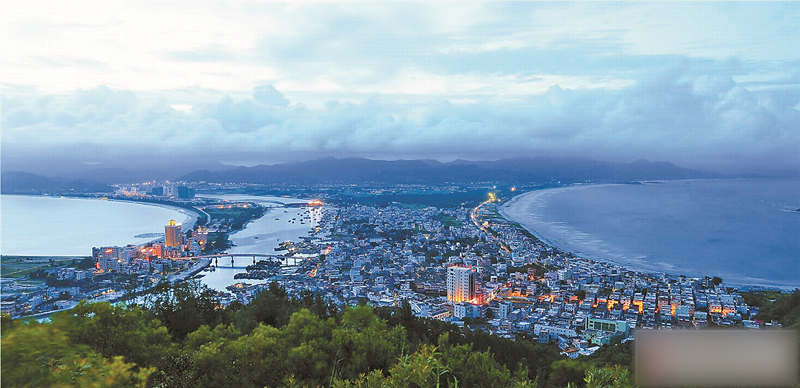
A bird’s-eye view of Huizhou peninsula from the top of a mountain in Shuangyue Bay in Huizhou.
Surrounded by mountains and lakes, Huizhou is home to brilliant scenery that has been favorably bestowed by nature. When the renowned Chinese poet Su Shi visited Huizhou, he could not help but write “I am willing to be a resident in Lingnan.”
Luofu Mountain, located in Huizhou, is hailed as “the Oasis on the North Tropic of Cancer.” The mountain is enshrined by Taoists as the seventh heavenly place to cultivate oneself.
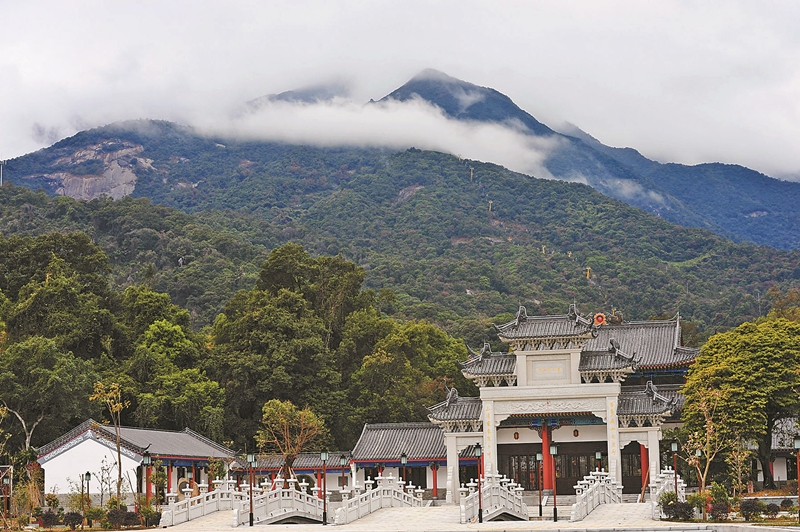
Luofu Mountain in Huizhou.
Luofu Mountain covers a sprawling expanse of more than 214 square kilometers with a total of 432 mountains and peaks, 980 waterfalls and springs and many bizarrely-shaped stones, cliffs and caves. The fascinating mountains are covered by lush green forests and are dotted with the abodes of fairies and immortals. When you are hiking here, all your fickleness and anxiety will surely fade away.
Besides, Huizhou offers up one of the richest opportunities for angling to be found anywhere in China. So once you are in Huizhou, don’t forget to go fishing and treat yourself to a seafood feast!
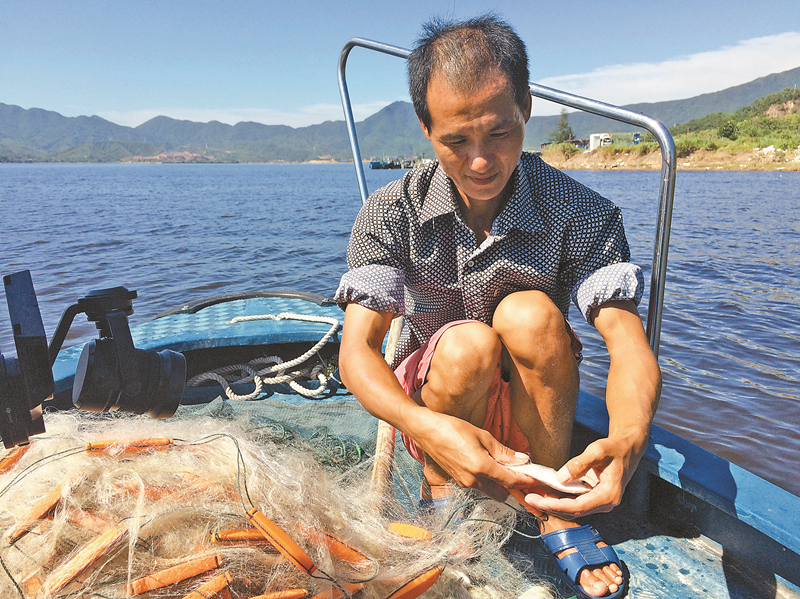
A fisherman at sea by Huizhou.
Shuangyue Bay (Double-moon Bay) gets its name from the twin moon-shaped bays. You can have a bird’s-eye view of Huizhou peninsula from the top of the mountain here. The soft white sand, cozy sea breezes and the natural sound of the waves beating against the coastal rocks will calm your nerves immediately. Come and enjoy the “wind in your hair, the sand between your toes and the sun upon your skin.”
Xunliao Bay, situated on Nianping Peninsula and with a coastline of 27 kilometers, was rated as a national AAAA tourist resort in May 2010. Xunliao has always been famous for its uniquely-shaped stones, clear water and white sands. It is an unpolluted, quiet paradise for sea-lovers. The pure water, shining white sand make it a “Green Emerald” and “White Golden Beach.”
Zhuhai, a 100-island city 珠海
With its seemingly countless islands, Zhuhai has earned itself the nickname of “city with 100 islands.”
The renowned Lovers’ Road, a coastal road with a total length of 17 kilometers, encircles the coastline of the city like a silver ribbon. The Fishing Girl statue, a landmark of the city, stands on the stone stairs by Xianglu Bay.
The beauty of the seashell-shaped Zhuhai Grand Theater, the vitality of Chimelong Ocean Kingdom, and the speed and passion of Zhuhai International Circuit are all calling for tourists.
Wanshan Archipelago, a 104-island archipelago that is part of Zhuhai’s Xiangzhou District, is far away from the hustle and bustle of the big cities. Fishing villages and small harbors with oddly-shaped stones and crystal clear water are sure to lure people who love tranquility.
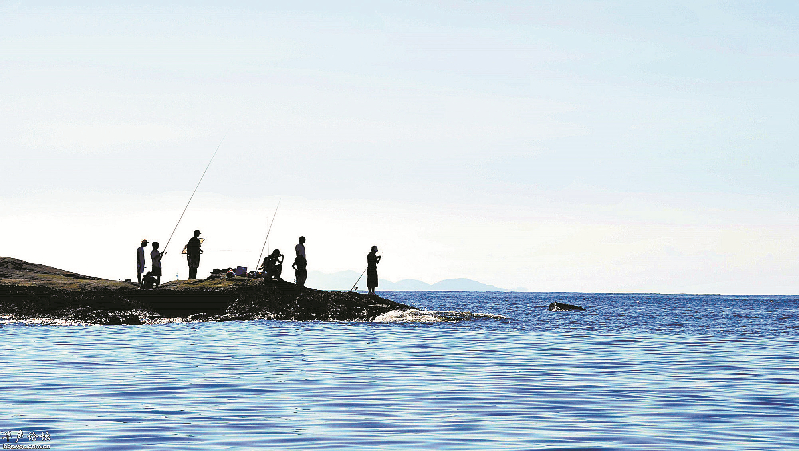
Fishing lovers at a bay on an island of Wanshan Archipelago.
In this primitive environment, you can go diving, surfing, fishing, you name it. And of course you can sit on the beach to enjoy the peace and watch the sunrise and the sunset.
Miaowan Island, located in the middle of Zhuhai’s Wanshan Archipelago, is fondly referred to as “dream island” and also as China’s Maldives. It is composed of the main island and an unnamed one, connected by a stone embankment built by locals in the 1970s.
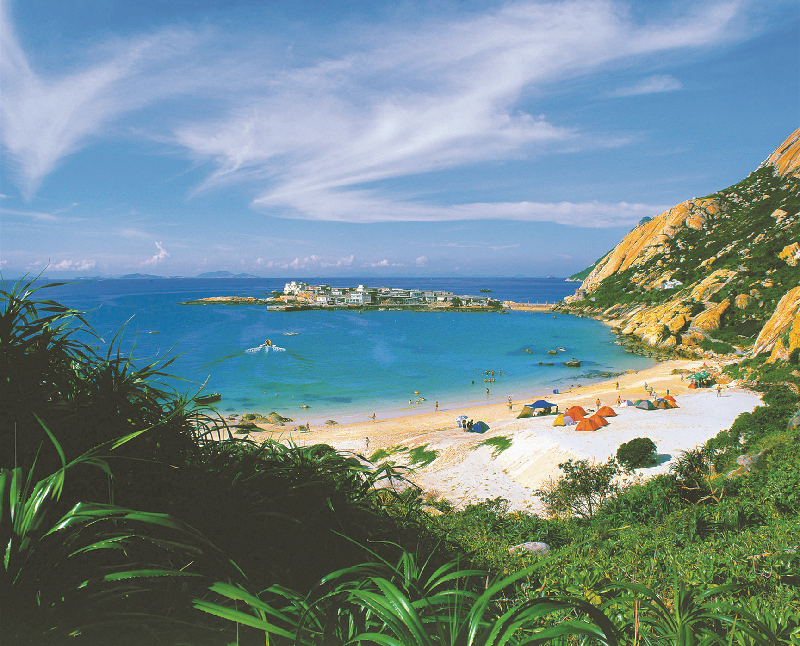
Miaowan Island.
As an undeveloped sightseeing spot, Miaowan Island has only one arc-shaped beach, a small village and a wharf. However, it has delicate white sand, clear water, fresh seafood and a first-rate natural environment.
Zhuhai is the combination of modern dynamics with historical profundity. Apart from the modern and international platforms, it’s also home to abundant historical sites such as Meixi Royal Stone Archways and New Yuanming Palace.
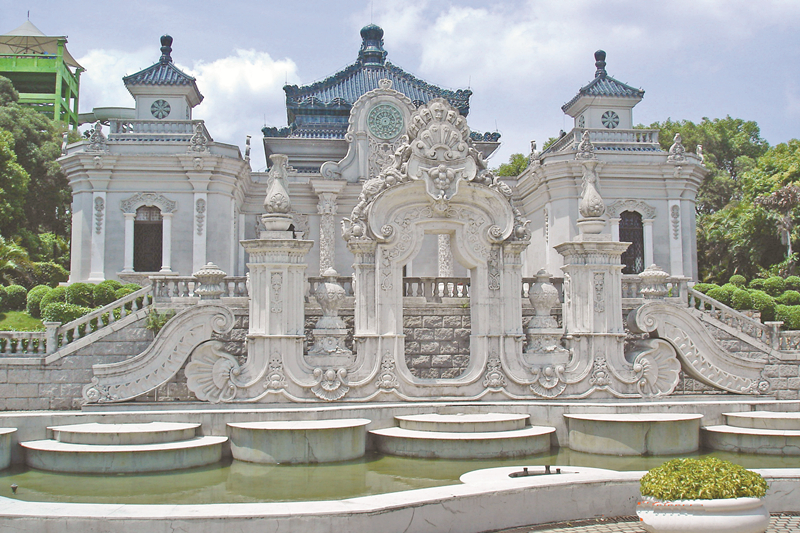
Meixi Royal Stone Archways is a key historical site under State protection. The stone archways were granted by Emperor Guangxu of the Qing Dynasty (1644-1911) as a tribute to Chen Fang, consul general to Honolulu, Hawaii. The stone archways cover an area of 126,000 square meters. Apart from the archways, you can also check out the former residence of Chen Fang and Chen’s garden and cemetery nearby.
Meixi Royal Stone Archways in Zhuhai were granted by Emperor Guangxu of the Qing Dynasty (1644-1911) as a tribute to Chen Fang, consul general to Honolulu, Hawaii.
New Yuanming Palace is the only royal garden in South China. Covering an area of 1.39 square kilometers and bordered by mountains to the east, west and north, it is the largest 4-A scenic area in Zhuhai.
Zhaoqing 肇庆
With over 2,200 years of history, Zhaoqing is one of the cradles of Lingnan culture. The blending of China’s Central Plain culture with Lingnan culture led to the birth of this historical and cultural city, and gives a unique living experience for residents.
Endowed with exceptional natural and geographical advantages, the city enjoys a high rate of greeneries with rivers and lakes intertwined between groves. If we look at the city from above, it appears to be a green and luxuriant germ inlaid in the landscape of Guangdong.
The scenery in Zhaoqing is hidden in forests and mountains, lending to a delicate and idyllic feel. Many notable and award-winning landmarks are found here, also undoubtedly an aspect that keeps its citizens sense of adventure alive and connected with the natural world.
As an example, Dinghu Mountain is a breathtaking enclave of China’s natural beauty and is worthy of exploration. Wandering along the paths in the mountain, there’s no shortage of fresh air. Its store of flora and fauna, including many endangered species, is virtually unmatched in China. Its gorges, canyons and 10-peaked mountain are covered in a blanket of green that make its views both memorable and constantly camera-worthy.
Not too far away from Dinghu Mountain lies the Seven Star Crags. The seven crags are naturally arranged in the same formation as the seven stars of the Big Dipper constellation, leading to the fitting name. Situated in the north of Zhaoqing, the Seven Star Crags is mainly formed by seven limestone mountains standing on several interconnected lakes. It covers a sprawling expanse of 9.28 square kilometers.
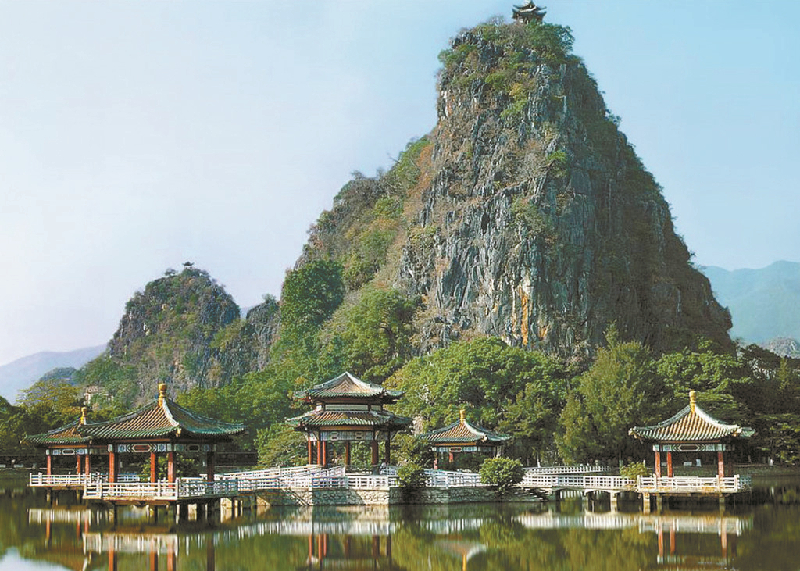
Seven Star Crags is one of the best known places in Zhaoqing.
Panlong Gorge, another natural tourist attraction, boasts a long gorge and the number one waterfall group in Guangdong Province with more than 100 waterfalls. In 2005, China’s top tourism magazine Chinese National Geography Magazine rated Panlong Gorge as “the most beautiful place in Guangdong Province.” It is an ideal destination to admire pristine natural scenery and learn about Chinese dragon culture and legends.
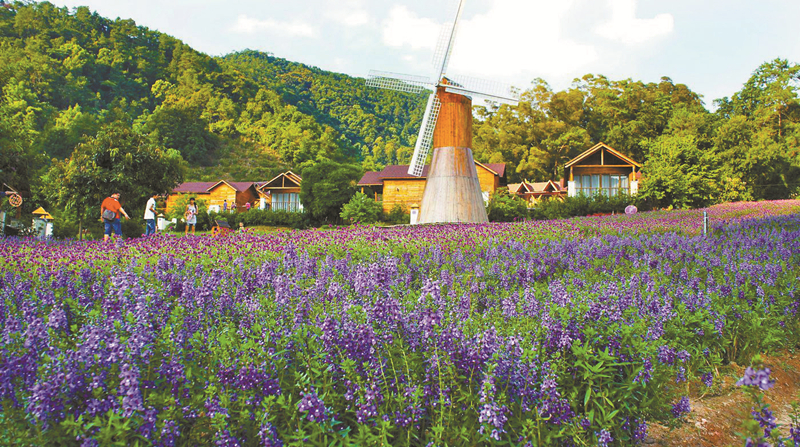
A valley with lavender blossom in Panlong Gorge.
Apart from natural wonders, Zhaoqing is also home to historical sites. Deqing Schooling Palace and Longmu (Mother of Dragons) Ancestral Temple are two examples.
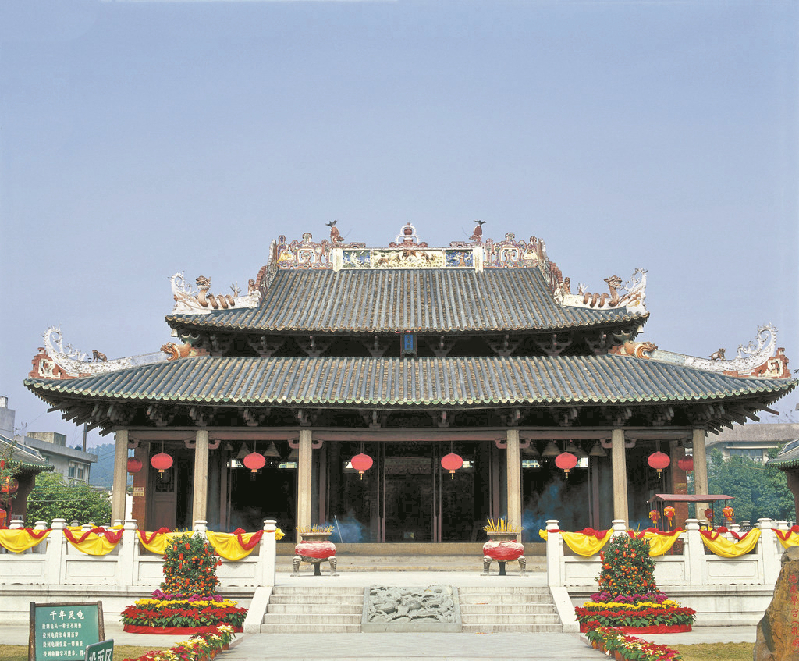
Deqing Schooling Palace.
Deqing Schooling Palace, a majestic feat of architecture standing alongside the Xijiang River in Deqing County, is a cultural relic. By its name, we know that it is a place for students to take classes. In ancient China, it was an important place for the cultivation of local talents before the modern system of primary school, middle school and university existed.